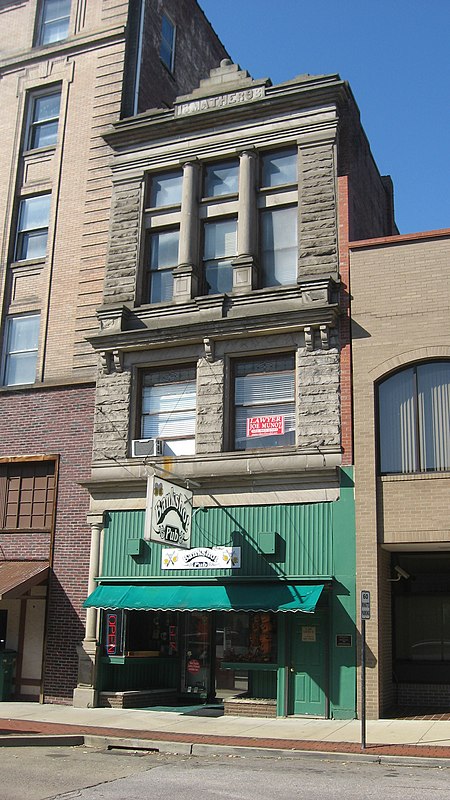Mather Building
1898 establishments in West VirginiaBuildings and structures demolished in 2018Buildings and structures in Parkersburg, West VirginiaCommercial buildings completed in 1898Commercial buildings on the National Register of Historic Places in West Virginia ... and 4 more
Demolished buildings and structures in West VirginiaMid-Ohio Valley, West Virginia Registered Historic Place stubsNational Register of Historic Places in Wood County, West VirginiaNeoclassical architecture in West Virginia

The Mather Building, also known as Franklin & DeHaven Jewelers, was a historic commercial building located at Parkersburg, Wood County, West Virginia. It was built in 1898, and was a three- to four-story, red brick and sandstone building in the Classical style. The interior featured a fine tin ceiling and a built-in vault.It was listed on the National Register of Historic Places in 1982, and demolished on June 23, 2018.
Excerpt from the Wikipedia article Mather Building (License: CC BY-SA 3.0, Authors, Images).Mather Building
Market Street, Parkersburg
Geographical coordinates (GPS) Address Nearby Places Show on map
Geographical coordinates (GPS)
| Latitude | Longitude |
|---|---|
| N 39.265555555556 ° | E -81.560833333333 ° |
Address
Market Street 469
26101 Parkersburg
West Virginia, United States
Open on Google Maps











